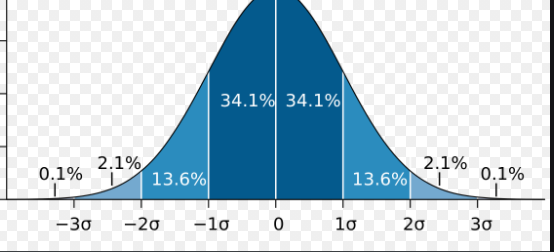Can standard deviation be negative? Most people want to know if standard deviation can be harmful or not. This article will provide the best answer to this question with logical reasoning. Here’s a simple answer to your question: ‘No.’ In short, can the standard deviation be more significant than the mean if the mean deviation of the smallest quantity quantity can become zero?
It is proved that when you have two digits in any log file that are not exactly equal to each other, the standard deviation will become positive, or you can say the value will become more significant than zero. Also, there is no way for standard deviation to mean being negative or for deviation to mean being negative. It always becomes positive or zero, but not negative.
Can standard deviation be negative? & How to prove this mathematically?
There are several ways. Another way is when you take the square root, you can only pick the positive quantity. The basic rule is that a negative quantity mainly comes from miscalculation. Logically, we can prove this to solve this problem because the standard deviation is always positive or the mean deviation can never be negative. A standard deviation is a rational calculation of the expansion of a quantity distribution. Mathematically, we will prove this through this formula;
It is the standard deviation formula. Why can’t the standard deviation be negative to prove whether the standard deviation can be harmful or not? In this formula, the sum total is the total quantity in the dataset, the bar is the average of the quantity, and n represents the number of quantities in the dataset. So through this formula you can logically prove your answer that the variance can be harmful or change the standard deviation or become zero or positive, but it can’t go negative.
The standard formula is calculated using numeric squares. The square of a number cannot be negative. Therefore, the standard deviation cannot be negative. It cannot be harmful, N cannot be negative, and SD cannot, therefore, be harmful. This average of the squared differences is the variance. Variation cannot therefore be harmful.
Where can the standard deviation be negative next to above?
Once you have at least two numbers that are not exactly the same, the standard deviation must be greater than zero – positive. The standard deviation cannot be negative under any circumstances. The variance calculation cannot give a negative result.
How do you get a harmful pattern?
No, standard deviation is not harmful! Whenever something is squared, we get a non-negative number. Since the denominator and numerator are both positive, the entire expression must also be positive. If significant differences occur (252, 11, 840, 305, 64, 5846), the standard deviation will be much more significant.
Are the default differences always positive?
Yes and no. It’s always a positive standard deviation precisely because of the convention you’ve agreed to – it measures a distance (anyway) from the mean.
And if all data numbers?
So the standard deviation is precisely zero. Finally, the standard deviation of the smallest possible value is zero. Once you have at least two numbers that are not exactly the same, the standard deviation must be greater than zero – positive. The standard deviation cannot be negative under any circumstances.
The variation is negative:
Note the word “square”. Anything squared (negative or positive) is always a positive number, except that null is still zero. When you square something, you can’t get a negative number. The average of all squared numbers from the previous step is then found.
For variance calculation, you:
- Take the dataset for each observation (number).
- The difference between the individual numbers and the mean of the dataset must be calculated. Some of these differences can be negative – unless all the numbers are the same.
- Then each difference is squared (multiply by itself). It is just the moment that eliminates the possibility of negative variance (and therefore standard deviation).
Dollar for dollar investment will be:
An essential feature of the medium is that the sum of all deviations from the medium is always zero. RSD is therefore always positive. Not. C. In a word. You may like some videos like Excel. On the other hand, the standard deviation of the return measures deviates from the mean of each individual.
Detour:
The mean can hold, but the pattern can change to an arbitrary degree by correctly adding/subtracting a positive number.
Coefficient of variation:
Calculate the deviation from the standard variable. Less than the difference. The smallest standard deviation value, as it cannot be negative. Standard Divergence As you can see, you must take the square root of the expression above to find a standard deviation, and we know that a negative value cannot be found within the square root. Nine years ago. Positive and negative values are insignificant.
Default deviation:
You can resize it in two ways. One way is to divide the population standard deviation, standardization, or sample standard deviation in the study by measuring the scale.
Can standard deviation be negative?
The absolute value of the mean is the denominator for calculating the RSD and can never be negative. The tin pattern Detour being negative is often written as a single positive value (magnitude). Still, it’s a binomial and equates positive and negative by that magnitude. Can standard deviation be negative? Can standard deviation be negative? Can standard deviation be negative? Can standard deviation be negative?
Also Read: Apg Cash Drawer and APG Cash Management Solutions.
